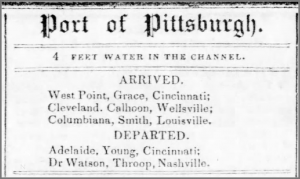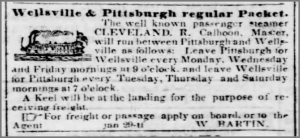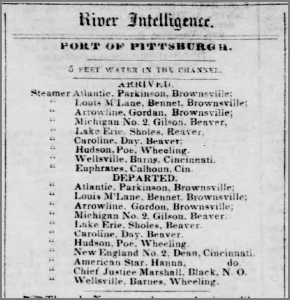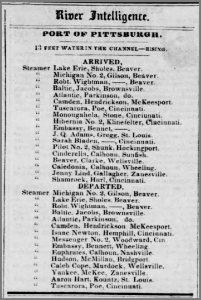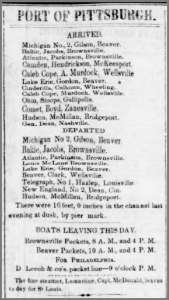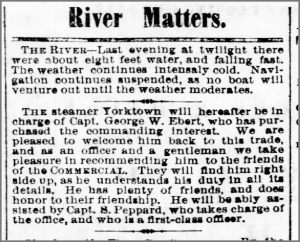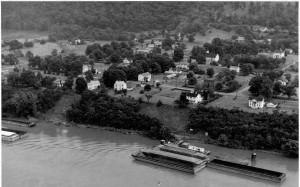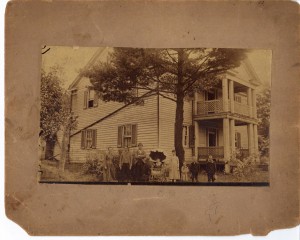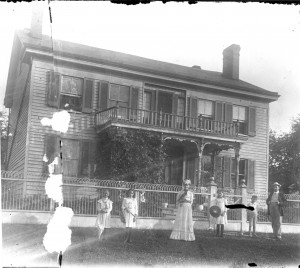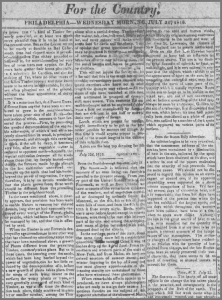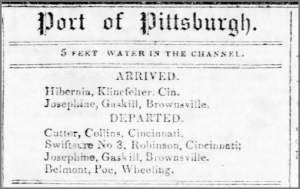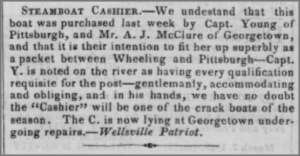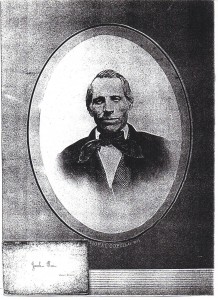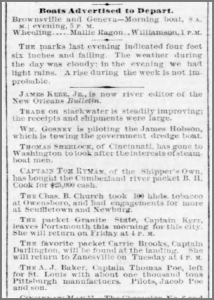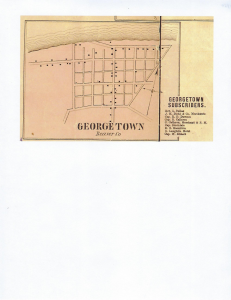The Pittsburgh Daily Post printed a column daily called the River Intelligence for the Port of Pittsburgh. From 1845 to 1850 the daily reports included the river condition and listed the steamers arrivals and departures.
The following news clips focus on the Georgetown captain, Richard Calhoon, and his boats. In the report dated 12 Feb 1845, the steamer Cleveland arrived at the Port of Pittsburgh from Wellsville, OH. The river channel had four feet of water. The str Cleveland was built in 1840 in Freedom, PA and dismantled in 1846. [1]
Also listed the str Columbiana arrived from Louisville. The str Columbiana built in Wellsville, OH in 1843 was commanded by Capt Jesse Smith who resided who resided opposite Georgetown in Smiths Ferry. [2]
The str Cleveland was a regularly scheduled packet serving Pittsburgh and Wellsville with daily runs.
In 1848, Captain Calhoon was the master of the str Cinderella operating between Pittsburgh and Cincinnati. Note that Calhoon is misspelled in the ad.
On 2 Nov 1848, the channel depth in Pittsburgh was five feet. The packets Hudson and Euphrates arrived at te wharf from Wheeling and Cincinnati respectively. Capt Richard Calhoon owned the str Euphrates and the Hudson was a Poe family boat. It is unclear which Poe brother was the captain on this trip.
On 7 May 1849 the river was rising. The Port of Pittsburgh was full of boats arriving and departing. Georgetown steamboat captains were taking advantage of the rise on the Ohio River.
Arrivals Master Destination
Tuscarora Poe Cincinnati
Cinderella Calhoon Sunnfish
Caledonia Calhoon Wheeling
Departures Master Destination
Euphrates Calhoon Nashville
Hudson McMillen Bridgeport
Tuscarora Poe Cincinnati
Three Calhoon captains were active on that day. No doubt Richard and Joseph MC commanding boats. The third brother is unknown. John had drown in Marietta in 1846.
On 10 May 1849, Captain Calhoon aboard the str Cinderella arrived from Wheeling. Also, in the report, the str Hudson arrived from and departed to Bridgeport (opposite Wheeling in OH). The str Hudson was commanded by Capt John Smith McMillen. His surname was misspelled in both line entries.
The river was rising from 10 to 16 feet .
References.
